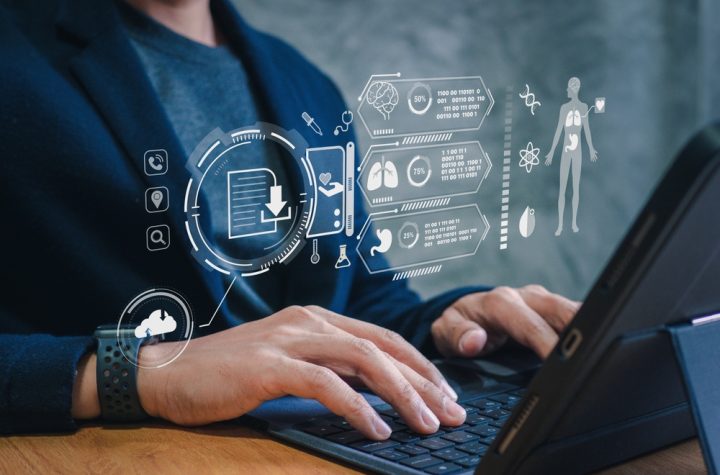
Living through the present-day crisis, forced restrictions due to lock down, operational troubles, and changes in behaviors and attitudes, it appears that digital health has been given the right set of circumstances to rise and prove its worth. The coronavirus pandemic is indicating the possibilities of digital health technology to control and mitigate some of the most significant public health-related problems.
As an attempt to slow down the rapid spread of the virus, U.S. and many other countries have implemented social distancing as a plan of action. Gaining access to medical health facilities and doctors has, thereby, become highly strenuous. In order to reduce the risk of spread of infection, hospital visits are limited and allowed only under certain pre-determined circumstances. This is expected to have a considerable repercussion on overall health outcomes and welfare — affecting not only COVID-19 patients but also those for whom vital support has been restricted from the healthcare providers due to the increase in demand for healthcare services.
Following are some examples of how digital health technologies are benefiting the healthcare industry through three basic avenues: by minimizing the spread of the virus, by flattening the curve, and by facilitating the management and treatment of the infected patients. It is foreseeable that the positive influence and importance of these technologies will possibly promote digital revolution in healthcare.
Surveillance
Digital health technologies have the inherent tendency to help manage the pandemic by sending off alarms and signals to potential infections. Given the ever-increasing number of patients during the pandemic, many healthcare organizations are limiting test eligibility to symptomatic patients and healthcare workers only. Moreover, since there is a time lag between the onset of any symptoms and the results once the patient gets his diagnostic test done. Digital health technologies come in handy at all such instances for surveillance purposes. Leading healthcare companies have devised online surveillance-mapping tools such as the Surveillance and Outbreak Response Management and Analysis System (SORMAS) and HealthMap. These have the potential to improve the early detection of infections as compared to the conventional epidemiological tools. Similarly, wearable devices also have the potential to be redesigned and repurposed to detect any evident patterns that are indicative of disease outbreaks. Fitbit devices, for instance, have been used to identify population-level influenza trends. Similarly, smart thermometers act as a smart source of information for influenza surveillance and forecasting.
Screening
Given the escalating pace of spread of COVID-19 across geographical boundaries, WHO has shifted its focus towards detecting and managing suspected cases at points of entry into a country. Hence, screening travelers for COVID-19 cases, based on flight origin and travel history, has been made necessary. This will enable early detection of coronavirus patients and limiting the spread of the disease. Digital health technologies are being put to best use for screening purposes. For instance, Taiwan has integrated its national health insurance database with its immigration department to create a Big Data resource for predictive analytics. The combined database is used to classify travelers’ infection risks, generating real-time alerts to facilitate identification.
Contact Tracing
The primary measure of containing the spread of COVID-19 is essentially the interruption of human-to-human transmission. Contact tracing using digital health technologies has emerged as a helpful tool for identifying and scheduling follow-up of individuals who have been in contact with an infected person. Smartphones are also being used for this purpose, deploying the power of Artificial Intelligence (AI) and machine learning to provide accurate and real-time information about the individuals. For instance, smartphones can use GPS or Bluetooth technologies for contact tracing. Although this process seems cumbersome and challenging, it has proven itself useful in previous epidemics for contract tracing as well as for managing isolation initiatives. Singapore is currently using a mobile app TraceTogether for contact tracing, which uses Bluetooth technology to identify individuals who have been in close contact with COVID-19 positive patients.
Patient Monitoring
Digital health technologies are winning accolades in the domain of patient monitoring. AI-equipped technologies have been implemented in hospitals across the U.S. and many other countries to help healthcare professionals to screen visitors and treat infected patients – thereby playing an important role in managing the COVID-19 pandemic. Taking patient monitoring a step further, remote monitoring is taking lead in healthcare, again exploiting benefits of AI technology. Practices and hospital staff can monitor their patients remotely and protect themselves while carefully monitoring their patients. Any deteriorating health conditions are immediately signaled as they occur. This technology is playing a vital role in reducing the exposure of healthcare personnel to the virus while significantly improving the quality of patient care.
3-D Printing of Equipment and Materials
3-D printing has been identified as another potential tool in crisis remediation during the current pandemic situation. Companies are deploying 3-D printing techniques to print equipment and materials for the healthcare industry. For instance, short-term use ventilators are being produced using 3-D print technologies. Similarly, China is using 3-D printed houses for isolated patients to ease their discomfort levels and improve quality of their care.
Read More: Connected healthcare is transforming hospitals: Here’s how
As COVID-19 becomes a global concern, owing to its high transmissibility and no effective vaccine so far, digital health technologies have emerged as a plausible strategic tool for containment and mitigation of the pandemic. The scale of success, however, rests on effective implementation and integration of these technologies with state-level policy.




More Stories
The Future of Radiology Information System
How To Buy EHR Software in 6 Steps
Information security guide for small healthcare businesses